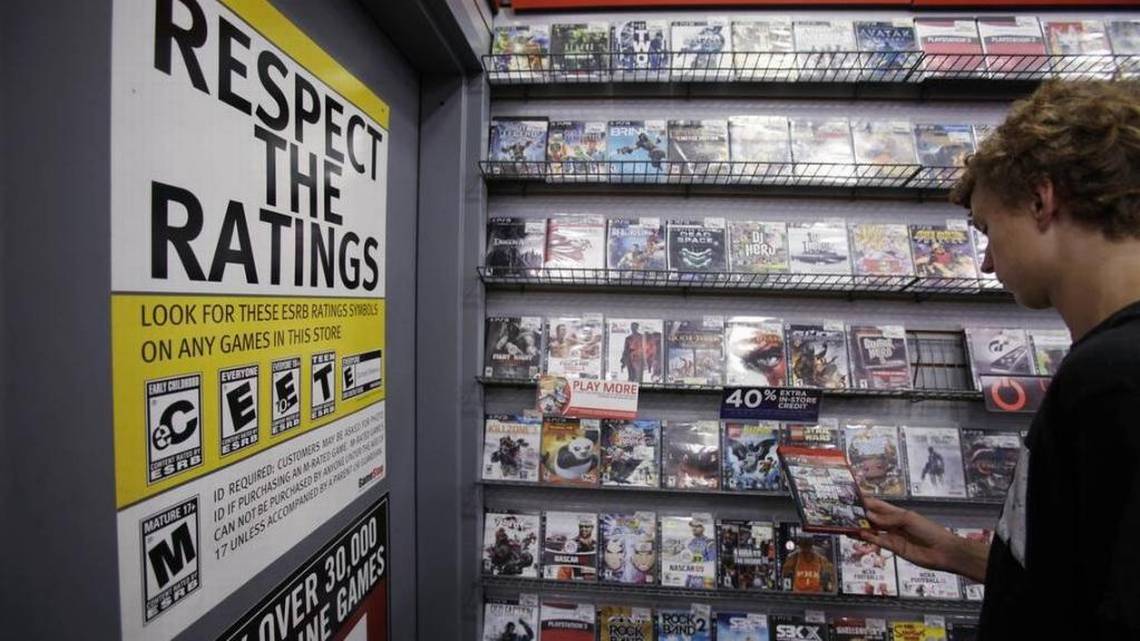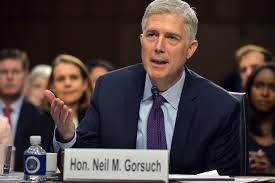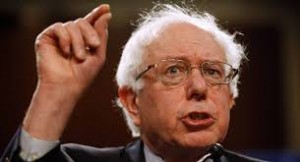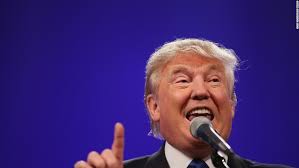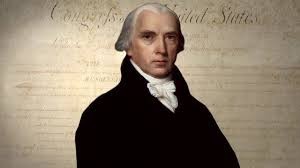Introduction
The story of the 2016 election was dissatisfaction with the status quo and the state of the nation. The media focused on the idea that the Republican candidate Donald Trump was a “change” candidate. Clearly he offered a change from the current administration and its chosen successor, Democrat Hillary Clinton, but he was also an outsider to the Republican Party and in many ways was repudiated his own Party.
There was also much broader dissatisfaction with politics, as shown by the success of Vermont Senator Bernie Sanders within the Democratic Party. But it was really shown by the near record low voter turn-out. Barely 52% of eligible voters went to the polls. Nearly half the voters simply stayed away, many out of disgust with the whole thing.
There seems to be a broad consensus that things aren’t working. The government isn’t operating properly, it’s certainly not doing enough to help the economy, and the process in which we chose our elected representatives is clearly broken. The public is sick of politics, and really sick of politicians. We see this in the record low turn-out, the success of Trump and Sanders, and the interest in Third Party candidates. People clearly want something different.
Dissatisfaction with American Politics
The nation faces enormous challenges and government doesn’t seem to be working to help solve them. The public has come to believe that our public institutions are no longer able to deal with the problems that face the nation. They also believe they no longer have any say in government. They feel like the government and the politicians are not listening to them.
Take the economy as a particularly relevant example. Economic anxiety was probably the dominant theme of the election, revealed mostly in hindsight. Many of the people who voted for Trump, particularly in the industrial heartland from Pennsylvania across the Great Lakes to Wisconsin, did so because they feel the effects of a changing economy, they didn’t think Washington cared, and were looking for things to change.
A few years ago I heard a woman at a Tea Party rally say about the economy, “I just want to know what went wrong, and who to blame.” It’s a valid question. Democrats say it’s a complex issue, and so they don’t really have a simple or compelling answer. They talk about automation, the talk about income inequality, raising the minimum wage, or making child care and college affordable. All may be valid policy approaches but they don’t directly address the underlying economic anxiety of millions of working class Americans, and they don’t explain “what went wrong.”
Republicans have an answer that’s both highly partisan and very simplistic. Republicans say that what went wrong is that liberal policies destroyed the American economy. Welfare stripped the initiative from the American worker. Unions raised the cost of labor. Needless regulation hamstrings business. All combine to hobble the economy.
I honestly believe that the main reason that Democrats have been on a multi-year losing streak because they don’t have an answer to the woman’s question, and they never try to counter this Republican narrative. The result is that the Republican narrative about the economy dominates the political debate.
Democrats need to understand that even many Trump supporters know that the Republican theory is nonsense, but they also know that Democrats never even bothered to address the issue which reinforced the idea that Democrats are out of touch and don’t understand the problems facing average Americans.
This essay is not an attempt to fix the Democratic party, but to fix the democratic political system so that our politicians and our government does a better job of addressing the publics concerns and is better able to find solutions to fix the problems facing the nation.
But first, in order to fix American democracy we need to first address the woman’s question, we need to explain what went wrong with the American economy. Then we need to look at how politicians and public institutions addressed, or failed to address, the changing economy.
What went wrong with the American economy?
The American economy and the world economy are in the middle of a seismic transformation, brought about by three inter-related trends: automation, globalization, and the rise of industrial China.
Here’s a fact that few people know: the United States currently produces more manufactured goods than at any time in history. But the other reality is that we’re doing this with a fraction of the labor that used to be employed in manufacturing. This means that good news for corporations doesn’t equate to good news for working class Americans. The reason for this divergence is the rise of computers and industrial robots. Automated factories produce goods to a higher quality and do it faster and cheaper then when factories relied upon human labor. Robots work around the clock, and don’t ask for days off. This has resulted in record corporate profits, and declining manufacturing employment and stagnant wages for workers.
At the same time there has been an explosion of international trade. The development of container ships made international shipping easy. Computers allowed easy tracking of goods from far flung manufacturers to consumers across the world. And a glut of ships and low oil prices have driven down the cost of transportation even further in recent years. Now U.S. manufacturers compete with low cost producers from around the world.
The biggest player in international production and manufacturing is now China. The impact of China is not simply its size as an industrial producer, but its rapid rise. In 1980, China accounted for a dismal 4% of the world’s economy, even though it had approximately 20% of the world’s population. It was a largely rural and struggling communist country. But things began to change in 1978 the then Chinese Premier, Deng Xiaoping, allowed the private ownership of property and the private ownership of businesses, including manufacturing companies. In 1980 the U.S., with 6% of the world’s population, accounted for roughly 22% of the world’s economy. At first these Chinese companies made low cost goods, but as business grew the government got involved. In the late 1980’s the Chinese government made the decision to turn the nation into an industrial manufacturer. The government built factories, built transportation and ports, coordinated nationwide industrialization, and assisted in international trade. As a result China boomed. China is now the world’s largest manufacturing nation (the U.S. is second) and accounts for roughly 16% of the world’s economy. Overall the Chinese economy is nearly as large as the American economy.
There’s no doubt that the rise of China as a manufacturing behemoth has had a dramatic impact on the American economy, and that has been felt most severely by the manufacturing sector. It is very difficult for U.S. manufacturers to compete with lower cost Chinese imports, and for US workers to compete with lower wage Chinese workers.
The rise of industrial China occurred at the same time that automation transformed the American economy. The result is that most politicians lambast China, but fail to address the other (read real) causes of the transformation of the economy. I find it deeply troubling that very few politician talk about these changes. Plenty talk about trade, but few talk about automation. This was particularly true during the just completed election. Donald Trump touched on these issues obliquely when he talked about bad trade deals with China, but he never mentioned automation or other issues impacting the economy. But at least he did touch, ever so slightly, on it. Democrats didn’t even bother. As a result they lost.
How can politicians deal with a problem when they seem largely unaware of the issue? They can’t, and the public gets it. Voters might not know all the details of the changing world economy. (I certainly don’t. What I’ve set out here is an overly broad and highly simplistic overview.) But they know that politicians aren’t discussing it in a meaningful way. All that politicians want to do is fight about it. So while Republicans have a theory, most people understand that what they say is mainly about their fight with Democrats, and not a realistic solution. As a result large numbers of voters chose third party candidates or simply stayed home on Election Day.
Why Don’t Politicians Address Real Issues?
I understand why Republicans don’t want to discuss issues like automation and its impact on the economy. If you talk about how automation has changed industrial employment, or how international trade has impacted business, it puts the lie to their claim that the sole cause of our economic problems are Democratic policies.
What I don’t understand is why Democrats don’t talk about how the world economy has changed. I think the main reason is that far too many politicians are idiots. They’re driven by ambition, not intellect. They don’t think deeply about any issue much less an issue as complex as the economy. Of course this applies to Republicans as well as Democrats. I also think that many Democrats actually believe that Republicans are right about the economy. That is why they focus on issues like fairness and equality.
But the real reason that politicians don’t discuss the economy in any detail is the nature of American politics. Our system creates a disincentive to deep thought or detailed policy analysis. Our first past the wire, “winner-take-all” elections allow one candidate to win simply be demeaning their opponent, which means that a politician who talks in detail about an issue provides an opponent plenty of ammunition for an attack. As a result, a rational politician simply doesn’t discuss anything in any detail.
The nature of our elections makes our politics silly and simplistic. Unfortunately this is exacerbated by the way that the “news media” now deals with politics. They seldom delve deeply into issues, and instead focus on personality, “character” issues, and “horse race” issues like polls and fund raising. (I realize that there are policy journals that discuss many issues in great detail, but virtually none of this filters up to the larger broadcast media outlets.)
For evidence of this, look no further than the recently completed election. It wasn’t just a presidential election; every seat in the House of Representatives and a third of the Senate was at stake, but the amount of media attention to down-ballot races was trivial. And there was very little talk about substantive issues like the changing world economy. Yes there was some, but the topics that dominated the campaign were Hillary Clinton’s emails and Donald Trump’s treatment of women. I realize that both are “character” issues, and I don’t expect dissertation length discussions of substantive issues like the economy, but in a rational world substance would at least be on par with whether or not Donald Trump every grabbed a woman’s crotch.
Economic anxiety is roiling American politics, and has been for years. It sent the Tea Party into the streets in 2010 and sent Occupy Wall Street into the streets in 2011. It has been simmering ever since, and now seems at a boiling point. In poll after poll the economy was the one thing that both Democrats and Republicans agreed was the most important issue facing the nation. And yet the “media” seemed incapable of addressing the issue in a serious manner. In three Presidential debates no one bothered to ask the central question about the economy. No moderate asked: “Mr. Trump (or Secretary Clinton) in your opinion, what accounts for the dramatic change in the American economy since the end of World War Two?” Or a simple follow up: “How do your policies address the fact that automation accounts for the massive decrease in the manufacturing workforce?”
So the first step in fixing American politics is to get the media interested in, and able to, discuss substantive issues. I’m not suggesting that the nightly news be turned into a policy debate, but that equal time be given to substance as to “character” issues. The complete lack of substantive focus on the most important issue in the election, and frankly in the nation since the 1980’s, is shameful.
The news media will argue that the problem is circular. They’ll say that they don’t report on these issues because politicians don’t talk about them. But politicians don’t talk about these issues unless the media asks. The only way we’ll get out of this is if someone jumps first. And since there’s no incentive for politicians to talk about hard issues, I think it will have to be the media.
But the problem is not just the failure of the media. The real problem is the nature of our political process, a process that actually punishes politicians for addressing issues in a serious manner. In my view the best way to get politicians to talk about issues is to remove the ability to win through destruction. I believe that the best way to do that is by changing our system of elections to allow viable third parties to compete in elections and win seats in Congress. The way to do that is to repeal a 1968 law that requires single seat congressional districts, and go back to the system that existed in this country from the nation’s founding, which allowed states to determine their own method of electing Representatives Under this system some states chose slate elections, where the entire delegation ran statewide, others used single seat districts like we have today, and others used multi-seat districts. The use of slate or multi-seat districts would effectively eliminate the ability of a candidate to win simply by tarnishing an opponent. That would significantly change the nature of our elections. This system would also allow third parties to develop, since a candidate can win a seat in Congress with less than 50% of the vote. Third parties would force candidates to expand their rhetoric since they could no longer win through demonization. They would be forced to address the issues facing the nation, and forced to explain how they plan to deal with those issues. Once politicians start talking about issues in a substantive manner then the media will report of the issues and the various proposed solutions in a substantive manner. And that will be the first step in repairing American Democracy.
Reviving American Democracy
The second step in fixing American democracy is finding a way to deal with the deep political hostility in the country. There is no doubt that this hostility has grown so extreme that very little gets done in Washington. (Unfortunately many state capitals are becoming equally partisan and dysfunctional.) According to recent studies, Congress has grown dramatically less effective, with fewer and fewer bills being passed. As one example of the partisan dysfunction at the end of the Obama administration there was a record number of judicial vacancies on the Federal bench. This is not just Supreme Court justices and Appeals Court Judges, but also District Court trial judges where are generally non-controversial. But in today’s hyper-partisan atmosphere even they are subject to bitter disputes.
Political dysfunction in Washington is a direct result of the increased partisanship in the nation as a whole. A recent Pew Research study found that partisanship has been growing deeper and more intense over the last decade or so. It’s now to the point where many people actually fear the other side. According to the Pew study 49% or Republicans said they were “afraid” of the Democratic Party, and 55% of Democrats felt the same way about the Republican Party. Similarly, 45% of Republicans say that the policies of the Democratic Party are a threat to the nation, and 41% of Democrats feel the same way about the Republican Party.
There are many reasons for this increase in partisan hostility. One cause is certainly the rise of a partisan media. The Pew study notes that these numbers began to diverge dramatically starting in the mid 1990’s. Conservative talk radio became a national phenomenon in the late 1980’s, with the repeal of the “Fairness Doctrine,” and Fox News began broadcasting in the mid 1990’s. Both relentlessly attack Democratic politicians and liberal policies, which undoubtedly has hardened many conservative’s views of liberals. And as conservatives started to paint them as a danger to the nation, liberals began to feel much the same way about conservatives and the Republican Party. Today we have Fox News on the right, which paints a scary picture of Democrats, and MSNBC on the left, which paints and equally bleak view of Republicans.
Another cause of the deep partisan divide is the rise of “social media” websites like Facebook and Twitter, which allow users to broadcast their views to friends, family, and those connected with friends and family. It is well known that people have a tendency on these sites to congregate with other like-minded people. It has gained the name of “homophily” or the tendency to primarily associate with people like yourself. There is nothing inherently wrong with this, but as social media has become more pervasive and as people get more of their news from social media, people tend to get only news that conforms to their preconceived political views. Liberals tend to read news stories shared by other liberals, thus reinforcing their shared leanings and biases, and the same holds true for conservatives.
All of these are contributing factors to the growing partisan divide. But the main cause of the divide is the two parties themselves. Not the policies or the tactics of the parties, but the reality that we have only two major political parties. Because we have only two major political parties ever issue in political life (and far too many in civil and social life as well) get framed as a fight between left and right, liberal and conservative, Democrat and Republican. If we had more than two parties then every issue couldn’t be bifurcated and place in the false dichotomy of left versus right.
Kill the Two Party System
So the solution to all of this, the political death match between Democrats and Republicans, the national inability to seriously address problems, is actually quite simple. Kill the two party system. I’m not talking about getting rid of Democrats and Republicans, not at all. I’m talking about changing the system so that we have more than Democrats and Republicans. I’m talking about change the system to allow more third party participation in American politics.
Once upon a time we had viable third parties – Whigs, Abolitionists, Free Soil, Progressives – and once upon a time as the economy or social conditions changed, the parties changed. Politics changed with changing social and economic conditions. Now we have a rigid two party system and this no longer happens. The two parties have a lock on politics and on political discourse, and unfortunately they are frozen in time. The result is that it is nearly impossible new ideas to advance and get taken seriously. The public senses this, and they’re sick of it. This is why they flocked to “outsider” candidates like Bernie Sanders and Donald Trump, and partially explains why Trump won. Trump did not talk like a politician, and it seemed like a breath of fresh air. The public hates the current system and they want to smash it with a sledge hammer. And Trump is that sledge hammer.
There are many reasons for the lock that Democrats and Republicans have on politics. First, most states have policies that favor the two parties, policies that were written by members of those two parties. Many states make it much easier for a Democrat or a Republican to get on the ballot than minor party candidates. Many states, and the Federal government, have a check-off box on the tax return to donate a couple of dollars to either the Democratic Party or the Republican Party. In many states the parties have a great deal of control over the actual elections. And third party candidates are routinely excluded from candidate forums. All create a major disadvantage for third parties and their candidates.
But the main culprit for the two party lock is the Uniform districts Act of 1968. It was enacted as a reforms after the Voting Rights act of 1965, but it has long outlived its usefulness. From the nation’s beginning until 1968, each state had the ability to determine how to select its Representatives. There were three common systems. A number of states had single seat districts, like we all have today. So a state with eight Representatives had eight single seat districts. Some states had “slate” or “at large” elections for all of their Representatives. So a state with the same eight representatives would have a state-wide election with fifteen or twenty candidates, and the eight with the most votes would be elected to Congress. (Many cities elect some or all of their council-members this way.) And a few states had “multi-seat” districts, where each district had two or three Representatives. So the state with eight Representatives might have four two-seat districts. In those races there may be four or five main candidates in each district and the two that received the most votes would be elected.
We had viable third parties in this country from our founding until the late 1960’s, and it was because we did not have solely single seat districts. Slate elections or multi-seat districts allow third parties, or minor parties, to exist and thrive. The reason may not be immediately obvious, so let me explain.
In our current “winner take all” congressional elections, a candidate needs to cobble together just over 50% of the vote to win. This favors large coalition parties that can “represent” broad interests. But in a slate election, or a multi-seat district, a person can get elected with less than 50% of the vote. In some cases they can get elected with barely 10% of the vote. In a multi-seat district, a person can also get elected with significantly less than 50% of the vote, and in a three seat district a person may get elected with barely 10% of the vote. Historically this allowed minor parties to start small and gain a few seats in areas that were amenable to their message. Once a party gains seats in legislative bodies at both the state and national level, the media and the public starts to take the party and its ideas seriously. This is how the Whig Party developed on the frontier in what is now Ohio and Indiana. It is how the Republican Party started and grew to prominence in Illinois and Iowa, and how the Progressives developed in Wisconsin and Minnesota.
Imagine the impact on the political debate when every issue is not simply a fight between Democrats and Republicans. I believe that introducing new parties and new ideas would dramatically change the tone of political discourse in this country.
In my dream proposal all Congressional districts would become multi-seat districts, with either two or three elected Representatives from each district.
This would have a number of positive benefits for the American political system. First it would allow small party candidates to gain seats in Congress, which would help introduce new people, new parties, and new ideas into the public discourse.
Second, and perhaps most important, it would change the way elections are conducted. Currently a candidate can win by simply destroying their opponent and driving down their approval and minimizing their voter turn-out. This simply would not work in a multi-candidate election. Sliming an opponent won’t work because there are plenty of other options. This would force candidates to run on something other than vilification of the other side. Some candidates might even run on ideas.
A third benefit of multi-seat districts is that they are more democratic. Currently a candidate can win with one vote more than fifty percent of the vote. That means that nearly half the people will feel, in some regards that they are unrepresented in Congress. But if, for example, there are two Representatives from a district far more people will have voted for a successful candidate and will feel represented. Imagine, for example, that in a two seat district the winner receives 50% of the vote, and the second place candidate receives 30% of the vote. The second place candidate would still gain a seat. This would mean that 80% of the voters would have voted from one of the districts two representatives. In a three seat district even more people will feel represented.
Multi-seat districts will also eliminate the power of Gerrymandering. In the 2016 election Republicans received 49.9 percent of the votes for Congress, yet gained 55.2 percent of the seats. In both 1996 and 2012 Democrats received a majority of the votes cast for members of Congress, but in both years gained less than a majority of the seats. The reason is that Congressional districts are heavily gerrymandered, or drawn to ensure a partisan advantage to one party over the other. If there are more than one Representative from each district it will make far less sense to creatively draw Congressional Districts.
This would help introduce new parties and new ideas into American politics, but it wouldn’t eliminate the Democratic or the Republican Party. Let me clearly state that this is not a plan to destroy either party, but simply a system that would allow more parties to participate in our political process. I suspect that under my plan both the Democratic and the Republican Parties would remain major parties. This is because even though House races would no longer be simple head-to-head elections, both the Senate and the Presidency would still be a contest between major candidates.
Restore Representative Democracy
While I think this will have a significant impact on politics and government, it is only part of what I think would help transform the American political system. The other part of the problem is that our members of Congress are truly out of touch with their political districts. This is one of the most common complaints among voters. And with every House member representing over 700,000 people it is difficult to see how they can truly be in touch with a significant number of their constituents.
This was not always the case, and was clearly not what the Framers intended. In the First Congress there was one Representative for every 33,000 citizens. James Madison’s first proposed Constitutional amendment would have set the number of Representatives at one for every 50,000 citizens. Throughout history the number of Representatives grew as the population increased. In the First Congress there were 59 Representatives. (It grew to 64 when Rhode Island and North Carolina ratified the Constitution.) This grew continually over the years, until 1920, when the number was set at 435. In 1920 each Member represented roughly 200,000 people. Since then the number of Members of the House has remained constant, while the population of the country has more than tripled. Today each Member represents just over 710,000 people.
Quite simply the United States Congress is no longer effectively representative. The United States is a “Republic” which is the system of government where elected representatives manage the affairs of the government for the people. This is nearly impossible when each Representative must somehow effectively manage the interests of nearly three-quarter of a million people. In Canada there is one elected representative for every 110,000 people. In England each Member of the House of Commons represents roughly 100,000 people. In Australia each member of the Australian House of Representatives represents roughly 155,000 people.
When compared to the other major English speaking democracies it’s clear that the U.S. is not very “democratic.” While I like Madison’s proposal, setting the number of Representatives at one for every 50,000 people would swell our Congress to over 6000 members, which would be unwieldly. Setting it at roughly the same ratio as England or Canada would increase it to 3000 members. But expanding it to one member for every 500,000 people would only increase it to 640 members, which is actually smaller than the 650 member British House of Commons.
Increasing the number of members of Congress would not only make the body more representative, but it would also make it easier to have multi-seat districts. Under this plan states would increase their members of Congress, but in proportion to their population, so no state would gain a proportional advantage. A state like Kentucky, with roughly 4.5 million people, would increase from 6 representatives currently to 9 representatives. This would allow the state to create four multi-seat districts, three with two seats, and one with three seats. Or alternatively three districts with three seats.
Conclusion
Pretty much everyone is sick of politics and they want to change the system. Many people talk about “changing” Washington. The reality is that we will only change Washington, if we fundamentally change the system. And that is what I am proposing. But I am not proposing some radical new idea. I am actually proposing a time-tested old idea. It may sounds strange and extreme, but it is actually the system we had for most of our history. To same American democracy we need to revive multi-seat districts and allow the House to once again grow with the population.
